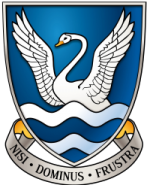 Art
Art
Aims
- To provide a wide range of creative and expressive experiences within a framework which is flexible, balanced and meaningful for the individual.
- To develop pupils’ knowledge, skills and understanding which are relevant to the delivery of programmes of study.
- To develop pupils’ artistic potential and aesthetic sensitivity to the visual and tactile elements of the world in which they live.
- To develop art and design skills by using a wide range of materials, tools and processes.
- To provide pupils with opportunities to respond intuitively and to draw upon memory, imagination, observations and first-hand experiences.
- To encourage pupils to consider alternative approaches and to take risks with their work.
- To encourage pupils to develop their initiative, independent thinking and problem solving skills.
- To stimulate pupils’ curiosity about the visual world and to develop an inquiring mind.
- To inspire pupils to enjoy the pursuit and achievement of high quality and creative outcomes.
- To ensure safe working practices in the use of tools, equipment and materials.
- To encourage pupils to develop an understanding and appreciation of the work of other artists, designers and craft workers as a stimulus for developing their own ideas.
- To provide pupils with opportunities to evaluate their own work and the work of others.
Staffing
Mrs Harper (Head of Department)
Mrs Irvine
Mrs Milligan
Ms Simpson
Mr Thompson
Mrs McCullough (Art Technician)
Subject Overview
Art and Design are important in today’s world due to the advancements in design, technology and the creative and cultural industries. They are relevant in the classroom and in everyday life as creativity and design is all around us.
Studying Art and Design provides opportunities to develop the young person as an individual and as a contributor to society, the economy and the environment.
At Glenlola Collegiate School all pupils study Art and Design throughout Key Stage 3. Pupils can then choose to study Art and Design at GCSE level. Art and Design is also taught at AS and A2 level.
The study of Art and Design also helps to develop key skills needed for the working environment, such as, Information Technology, Application of number, Communication and Problem-solving.
Key Stage 3
All pupils in years 8 to 10 study Art and Design for 1 hour each week. Each module is designed so that pupils can experience a range of different teaching styles. A typical module may incorporate activities such as observation from a first-hand source using tone and/or colour, experimentation inspired by art movements/designers, planning of ideas, ICT skills and production of a personal response.
Art and Design provides pupils with the key experiences of investigating ideas and materials and to realise their intentions in ways which integrate these key experiences.
Key Stage 4
A GCSE in Art and Design gives pupils the opportunities to actively engage in the creative process of art, craft and design and to develop as an effective and independent learner. Pupils will have the freedom to explore many art, craft and design skills and processes throughout the two components of this course. They will also gain an understanding of the creative and cultural industries. Pupils will develop core skills through investigating images and artists, learn how to create art and design through different media, processes and technologies and use specialist vocabulary.
We follow the CCEA Art and Design specification, studying:
- Component 1: Part A –Exploratory Portfolio, investigating at least 2 disciplines through a portfolio of experimental work.
- Part B- Investigating the Creative and Cultural Industries, creating a Personal Outcome or Design solution.
- Component 2: Externally Set Assignment, completing work in response to a stimulus paper, including a final outcome under exam conditions.
Key Stage 5
An AS/A2 Level qualification in Art and Design continues to build on the knowledge, understanding and skills developed at GCSE and Key stage 3. It also prepares pupils for further study in Art and Design or related study in the creative and cultural industries.
We follow the CCEA Art and Design specification, studying:
AS LEVEL
- AS 1: Experimental Portfolio, which is theme based and pupils develop, explore and record ideas in the form of a portfolio.
- AS 2: Personal Outcome, which is also theme based, where pupils produce a final outcome, supported by preparation work.
A2 LEVEL
- A2 1: Personal and critical investigation, which is theme based and pupils produce both a written (1000-3000 word) investigation and a practical response.
- A2 2: Thematic Outcome, where pupils produce a final outcome/outcomes, supported by preparation work.
http://www.rewardinglearning.org.uk/microsites/artanddesign/
Career Opportunities
Studying Art and Design will develop skills in creativity and personal motivation, project management and organisation, innovation, higher level thinking and problem-solving.
These skills can lead onto studying in further or higher education in a range of areas and potential careers such as:
- Graphic design
- Illustration
- Exhibiting and Merchandising
- Architecture
- Set/Special effects designer
- Advertising
- Interior Design
- Web design
- Museum and gallery curation
- Teaching
- Print making
- Textile Design
- Prosthetics
- Vehicle Design
- Product Design
- Jewellery
- Ceramics
- Interactive Media
- Moving Image
- Film
- Special Effects
- Photography
- Art therapy
These are only some of the many fields open to Art and Design students.




